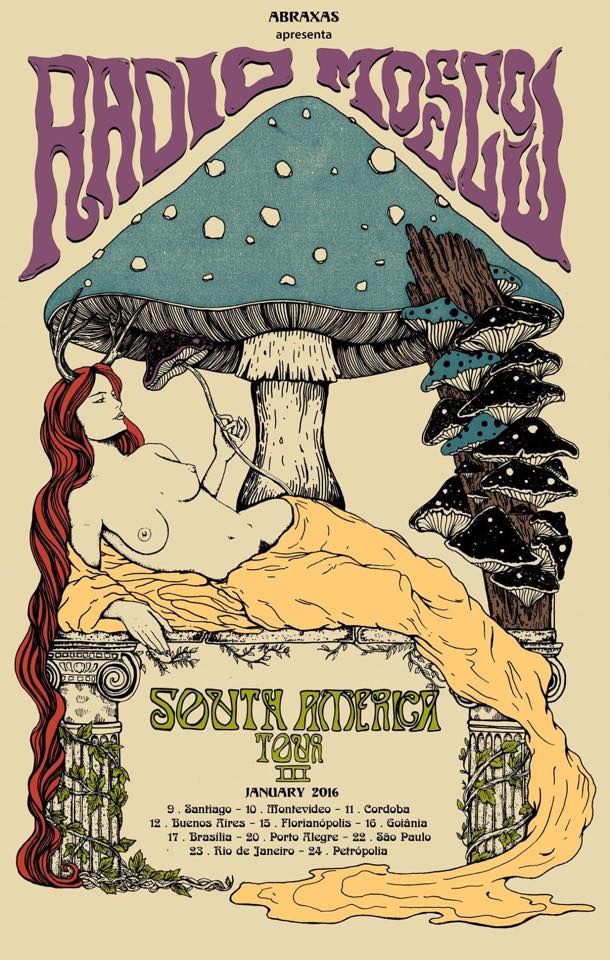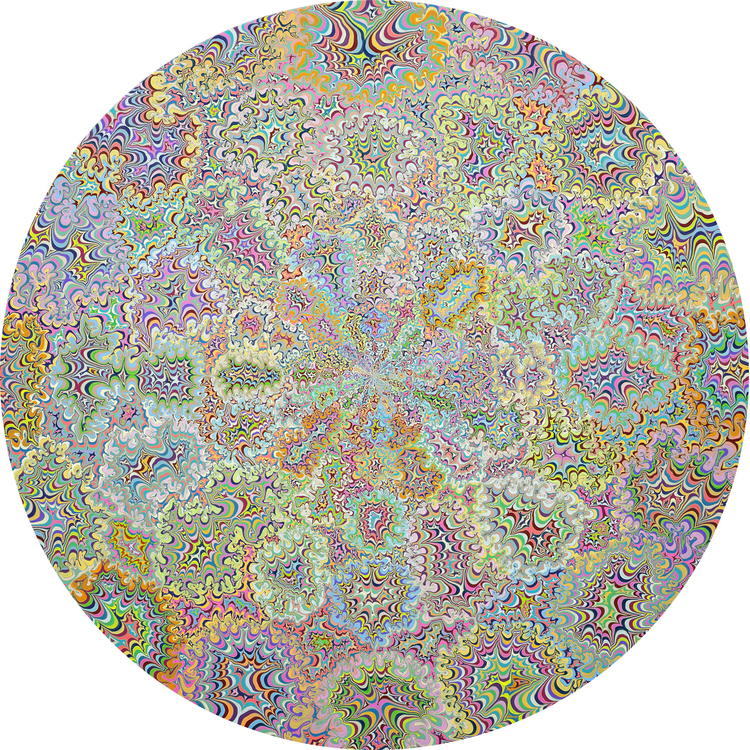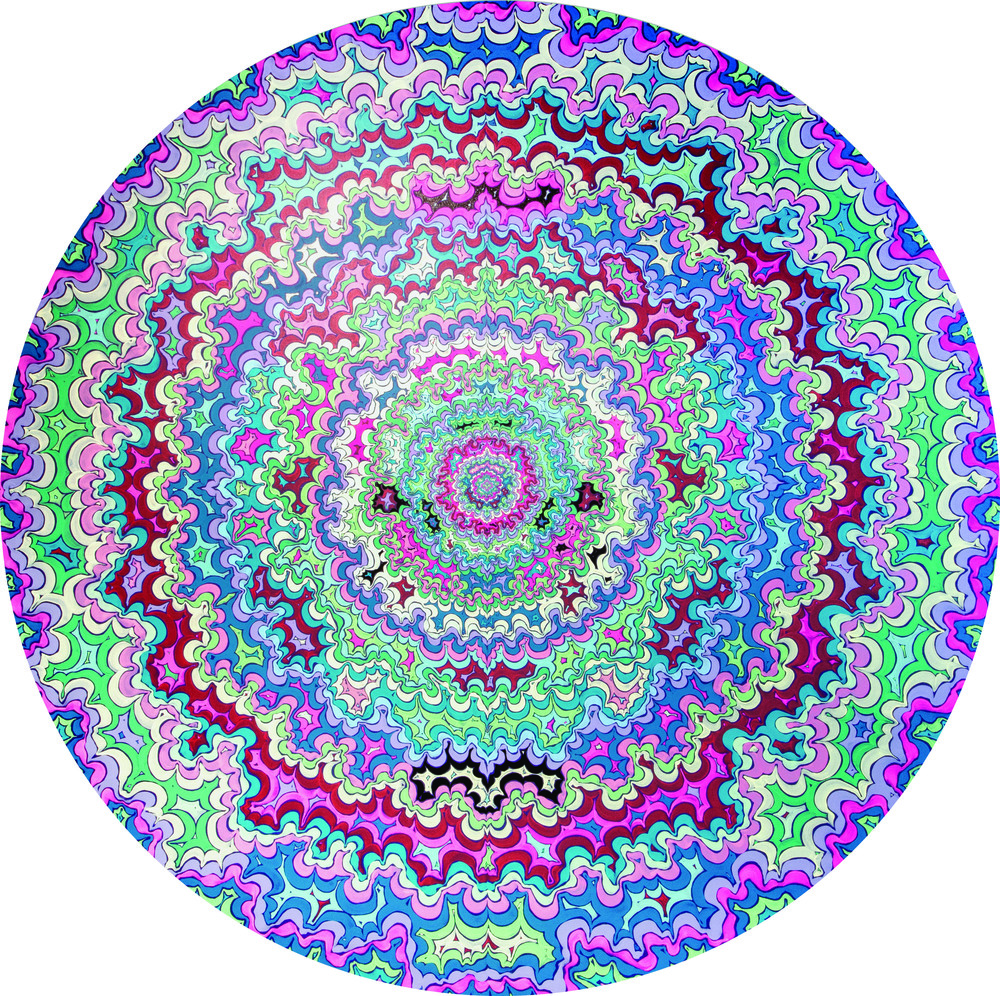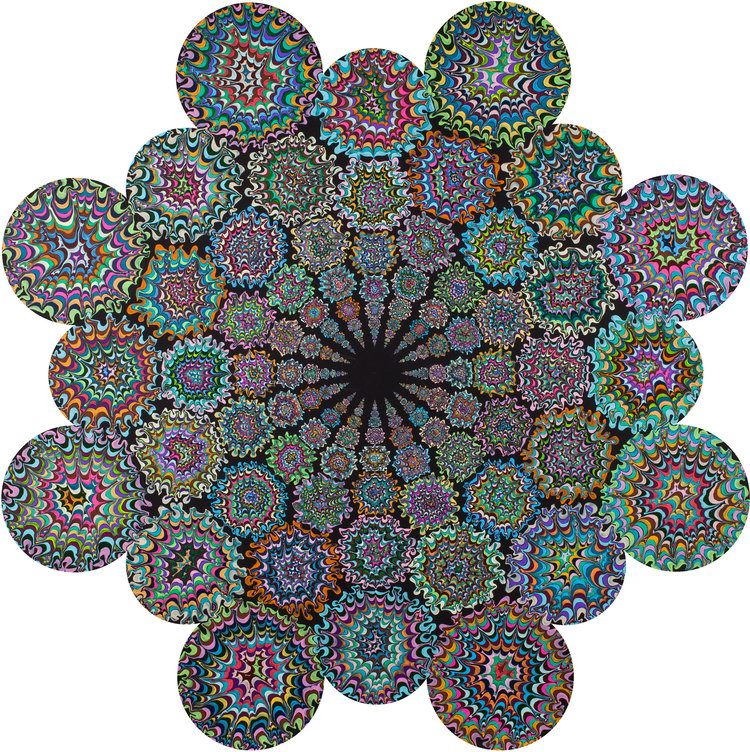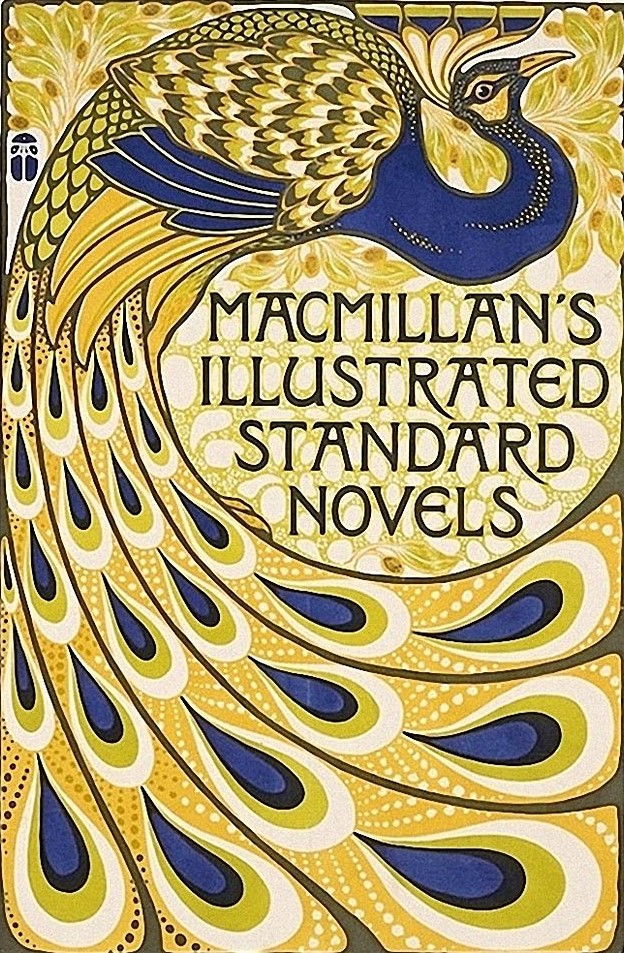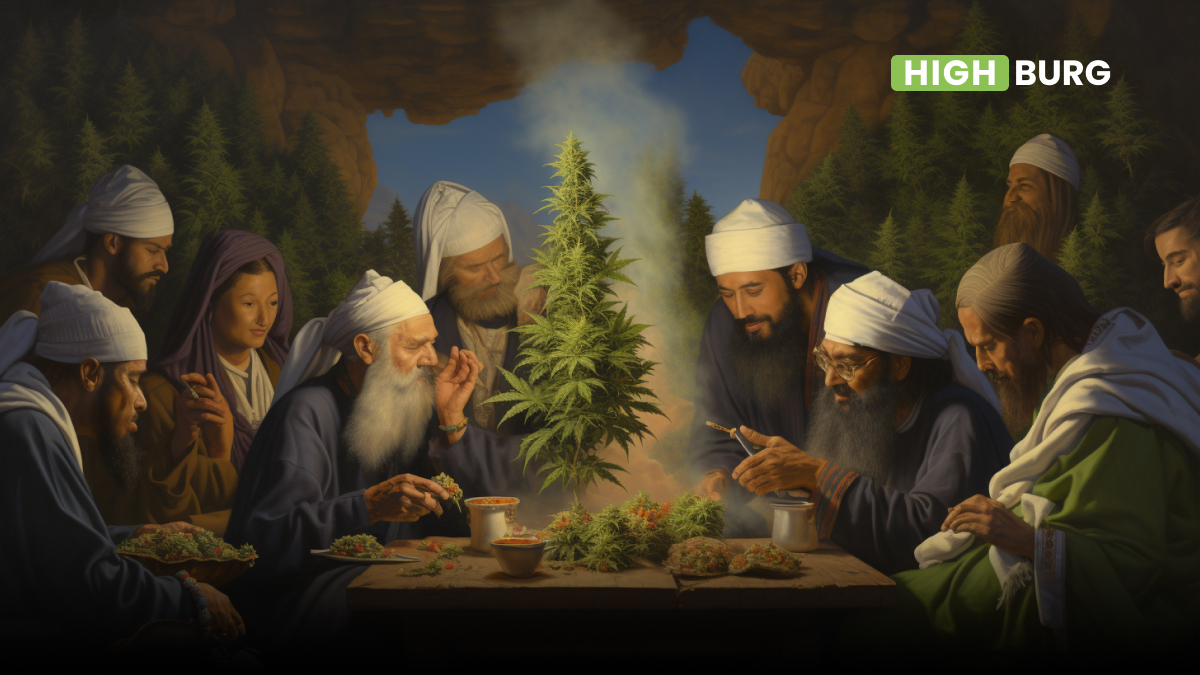We can always recognize the favorite style of painting in the artist’s works — through technique, historical events, motifs, and colors. Therefore, we are unlikely to confuse cubism with impressionism or surrealism with pop art. But how can one separate from all this Psychedelic Art? Let’s talk about the main symbols that will definitely help you guess.
Allusions to drugs
It is impossible to consider psychedelic art without drugs, as they could not exist without each other. Some artists treat this topic succinctly. If they take psilocybin substances, they draw mushrooms. If they like LSD, they draw pills or aim for round shapes.
Actual, how they are received, and what effect they create is reflected in art. Through contrasting colors, vibrations, illusions, and hallucinations, collage artists show the transitions from one state to another and convey their feelings — from euphoria to fear and hatred.
One of the most striking examples of the drug metaphor is the depiction of the third eye. It seems to show what is hidden from society — as Carl G. Jung noted, such symbols “imply something more than its obvious and immediate meaning”. And the third eye is a way to see the “unconscious aspect”.

Mandalas
This multifaceted geometric figure is a symbol of the world order. From Sanskrit, the word is translated as a circle or center. At first, it was used in religious practices, where it showed the world in which the deities of Buddhism and Hinduism live. Tibetan monks made sand mandalas using colored sand and geometric principles. In order to come to this process, they have been trained for many years.
Mandalas are popular because of the hippie movement. Therefore, they are also often found in the decor — posters, and tapestries, iconic for the culture of the 1960s.

Psychedelic artists draw mandalas to remind us of the great importance of the world around us, connecting everything into a single organism. Some of them, using the mandala, make references to various topics — the structure of flowers, shells, webs, cells, or galaxies. Psychedelic mandalas have been around far longer than New Age or hippie trends, however.
Fractals
No one, except for professional mathematicians, was interested in fractals for quite a long time. Initially, a fractal is a geometric figure of parts similar to each other, each of which is similar to the whole figure as a whole.
The basis of such art is the study of geometry through mathematical formulas or a set of formulas. Just as a landscape photographer shows how beautiful symmetrical leaves are and how contrasting sky and water are, fractal artists show mathematical patterns. They are inspired by the repeatability of algorithms, which are very similar to the effects of psychedelics. Many repeating parts turn into a single whole, which is often associated with illusions or hallucinations.
Paisley patterns
Paisley is an ancient pattern, and it is almost impossible to trace the exact date and place of its appearance. This mysterious story is reflected in the name. It is also called the Turkish cucumber, and the tear of Allah, and the Indian palm leaf. It seems that you can arrange a competition for the most interesting name.
Although originally associated with textiles and architecture, paisley began to be associated with rebellion in the 1960s. It became a symbol of the unification of the hippie subculture.
During the “Summer of Love”, when about 100,000 hippies gathered in San Francisco, paisley helped maintain the spirit of multiculturalism among those who advocated pacifism and the rejection of consumer values. Paisley does not have such a bright and unique effect now, but then the symbol underwent a big shift and suddenly began to symbolize everything that was cool in youth culture.
Repetition
The result of the popularity of psychedelic art was advertising. Enterprising marketers began to use the details and symbols of this trend to sell countless products — cigarettes, groceries, cars.
7Up used the same in their TV commercial. The basis of the video is constant repetition. The bubbles of the drink either create chains, turn into butterflies, or end up in the hands of singing girls (which, by the way, also bifurcate). You can make the picture more comical if you imagine huge LSD tablets in your hands in this ad.
And it really worked. Here is an example from the comments: “I remember seeing this commercial when I was in the hospital, in 1974, getting my tonsils out, thinking that was gonna be the first cold pop I’d drink as soon as I could swallow again.”
Another example of repetition is waves. They are often used, propagated, and mixed with texts. Wes Wilson, the father of the rock concert poster of the 60s, can also use this. He designed a poster for musician Bill Graham. After that, Bill noted that this concert was “the best gig I ever put on in my whole life”.
With the help of waves and repetitions, the artists refer the viewer to the mythopoetics of the water element, which gives birth to life, predicts death, and is endless like the very cycle of natural metamorphoses.

